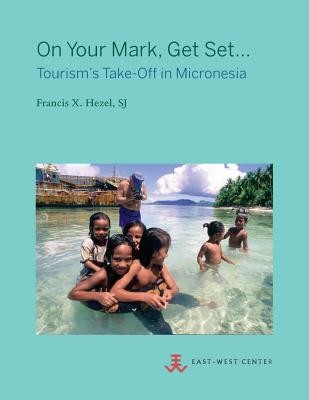
- We will send in 10–14 business days.
- Author: Sj Francis X Hezel
- Publisher: East-West Center
- ISBN-10: 0866382801
- ISBN-13: 9780866382809
- Format: 21.6 x 27.9 x 0.6 cm, minkšti viršeliai
- Language: English
- SAVE -10% with code: EXTRA
Reviews
Description
When Continental Air Micronesia inaugurated regular jet air service to the Trust Territory of the Pacific Islands in the late 1960s, it created new links between the Islands and both the US mainland and East Asia. The new flight service opened commercial possibilities for islands then struggling with an uncertain political and economic future. Tourism was at best a distant hope as an engine for economic growth. Chuuk, Marshall Islands, Northern Marianas, Palau, Pohnpei, and Yap all began promoting tourism at the same time, with roughly comparable infrastructure and a total of 238 hotel rooms among them. In 1970, Continental built three new 50-room hotels in Chuuk, Palau, and the Northern Marianas and began vigorously promoting the islands as a Pacific paradise getaway destination. What happened over subsequent decades in these three island groups is the subject of the study. Policymakers elsewhere in the Pacific may reasonably look to tourism as a catalyst for national economic development, but what these case studies suggest is that they should not assume all Pacific states can successfully summon a tourist industry at will. Moreover, since tourism is a highly mobile and competitive economic activity, the gains made in nurturing an emerging tourism industry can fluctuate almost overnight due to global forces well beyond the control of island governments or investors.
- Author: Sj Francis X Hezel
- Publisher: East-West Center
- ISBN-10: 0866382801
- ISBN-13: 9780866382809
- Format: 21.6 x 27.9 x 0.6 cm, minkšti viršeliai
- Language: English English
When Continental Air Micronesia inaugurated regular jet air service to the Trust Territory of the Pacific Islands in the late 1960s, it created new links between the Islands and both the US mainland and East Asia. The new flight service opened commercial possibilities for islands then struggling with an uncertain political and economic future. Tourism was at best a distant hope as an engine for economic growth. Chuuk, Marshall Islands, Northern Marianas, Palau, Pohnpei, and Yap all began promoting tourism at the same time, with roughly comparable infrastructure and a total of 238 hotel rooms among them. In 1970, Continental built three new 50-room hotels in Chuuk, Palau, and the Northern Marianas and began vigorously promoting the islands as a Pacific paradise getaway destination. What happened over subsequent decades in these three island groups is the subject of the study. Policymakers elsewhere in the Pacific may reasonably look to tourism as a catalyst for national economic development, but what these case studies suggest is that they should not assume all Pacific states can successfully summon a tourist industry at will. Moreover, since tourism is a highly mobile and competitive economic activity, the gains made in nurturing an emerging tourism industry can fluctuate almost overnight due to global forces well beyond the control of island governments or investors.


Reviews